Beginner’s Guide to Choosing Loose Leaf Tea

Introduction: Why Loose Leaf Tea Is the Better Choice
If you’re just starting your tea journey, one question likely comes to mind:
“What’s the difference between loose leaf tea and bagged tea—and which one should I choose?”
The short answer? Loose leaf tea is fresher, fuller in flavor, and better for your body. In this beginner’s guide, you’ll learn how to choose the right type of loose leaf tea, how to brew it easily (even without fancy tools), and what makes single-origin teas from Nepal truly stand out.
By the end, you’ll feel confident choosing a tea that matches your taste, goals, and lifestyle—whether it’s for your morning routine or a calming nighttime ritual.
What Is Loose Leaf Tea?
Loose leaf tea refers to whole or partially broken tea leaves that are not packaged in tea bags. Unlike bagged tea—which often contains “dust and fannings” (tiny, broken bits)—loose leaf tea gives the leaves room to unfurl, release essential oils, and deliver a more complex cup.
Quick Comparison:
| Feature | Loose Leaf Tea | Tea Bags |
|---|---|---|
| Leaf Quality | Whole or large leaf | Dust or broken leaves |
| Flavor | Rich, aromatic, layered | Flat, often artificial |
| Brewing Potential | Multiple steeps possible | One steep only |
| Environmental | Low-waste, no microplastics | Often non-compostable |
✅ Want a deeper dive? Read: Loose Leaf vs Tea Bags
Why Choose Loose Leaf Tea? (5 Powerful Reasons)
1. Fuller, Fresher Flavor
Whole leaves preserve essential oils, which deliver complex flavors and subtle aromatics that bagged teas can’t match.
2. Higher Antioxidant Content
Loose leaf tea contains more catechins, the antioxidants linked to improved metabolism, skin health, and focus.
3. Multiple Steeps = More Value
One serving of high-quality loose leaf tea can often be steeped 2–3 times, making it more economical than it seems.
4. No Additives or Flavorings
You get the real taste of the leaf—no artificial vanilla, “natural” flavors, or mystery ingredients.
5. Connection to the Source
Especially when you choose single-origin teas from Nepal, you’re tasting the terroir of high-altitude Himalayan gardens and supporting small farmers.
Types of Loose Leaf Tea (And How to Choose)
Let’s walk through the major types of loose leaf tea so you can match them to your needs and taste preferences.
☀️ Black Tea
Bold, brisk, and perfect for mornings
-
Flavor Notes: Malt, honey, toasted grain, stone fruit
-
Caffeine: High
-
Good for: Energy, breakfast pairing
🌸 Oolong Tea
Between green and black—floral, fruity, or roasted
-
Flavor Notes: Orchid, apricot, roasted hazelnut
-
Caffeine: Medium
-
Good for: Mindful sipping, afternoon tea
🍃 Green Tea
Fresh, grassy, lightly astringent
-
Flavor Notes: Grass, citrus zest, umami
-
Caffeine: Low to medium
-
Good for: Focus, digestion, gentle energy
❄️ White Tea
Delicate and sweet, made from young buds
-
Flavor Notes: Melon, honey, floral
-
Caffeine: Low
-
Good for: Relaxation, clarity, hydration
How to Choose the Right Loose Leaf Tea for You
1. Think About the Time of Day
-
Morning: Go for black or roasted oolong
-
Afternoon: Choose oolong or green
-
Evening: Try white tea or lightly oxidized oolong
2. Consider Your Goals
-
Need focus or energy? → Black or green
-
Want to reduce stress? → White or floral oolong
-
Improving digestion? → Green or dark oolong
3. Match to Your Flavor Preferences
-
Love coffee? → Try bold black teas
-
Like white wine? → Choose green or white teas
-
Into fruit and florals? → Nepalese oolongs are perfect
How to Brew Loose Leaf Tea (It’s Easier Than You Think)
You don’t need fancy gear to brew loose leaf tea.
Basic Method:
-
Add 1 tsp tea per 8 oz cup
-
Heat water to the right temperature
-
Steep for the suggested time
-
Strain and enjoy
🔗 Need details? See: How to Brew Loose Leaf Tea Without an Infuser
Water Temperature & Steep Time Chart:
| Tea Type | Temp | Time |
|---|---|---|
| White | 160–175°F | 2–3 min |
| Green | 175–185°F | 2–3 min |
| Oolong | 190–200°F | 3–5 min |
| Black | 200–212°F | 3–5 min |

Where to Buy Quality Loose Leaf Tea
Not all loose leaf teas are created equal. Here’s what to look for:
✅ Single-Origin: One source = better traceability
✅ Handpicked & Whole Leaf: No broken pieces
✅ From Ethical Small Farms: Support direct trade
✅ Freshness: Harvest dates matter
✨ Explore our collection of loose leaf teas from Nepal — sustainably grown, hand-rolled, and shipped directly from small farms in Ilam.
Frequently Asked Questions
What’s the difference between loose leaf and bagged tea?
Loose leaf uses whole leaves. Bags use broken dust or fannings, often with flavorings.
Can I brew loose leaf tea without an infuser?
Yes! Use a teapot, French press, or even a mug and strainer.
Is loose leaf tea more expensive?
Per cup, no. Since many loose leaf teas can be re-steeped 2–3 times, they offer great value.
What tea should I start with?
Try a starter sampler with a black, oolong, and green tea—or go with a floral oolong like Spring Oolong.
Does loose leaf tea expire?
It doesn't “go bad” quickly but will lose flavor. Store it in an airtight container away from light and moisture.
Your Loose Leaf Tea Journey Starts Here
Choosing loose leaf tea opens the door to richer flavor, greater health benefits, and a deeper connection to nature. Whether you’re a first-time sipper or a curious coffee switcher, the key is to start small, taste often, and trust your senses.
👉 Explore Our Loose Leaf Teas
👉 Try a Beginner-Friendly Oolong
👉 Does Tea Hydrate You? How Tea Supports Your Health
👉Does Tea Make You Pee More?
👉Nepal Oolong Tea: Flavor, Health & Brewing
👉Five Reasons You Should Drink Himalayan Teas
